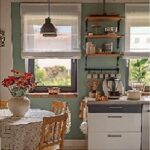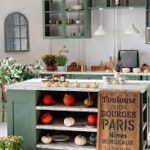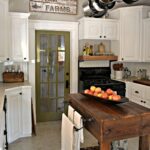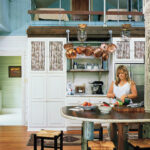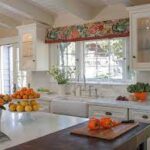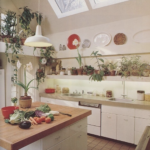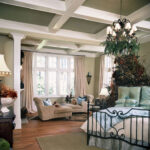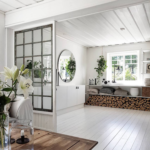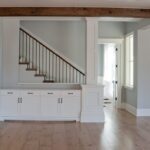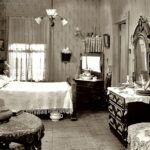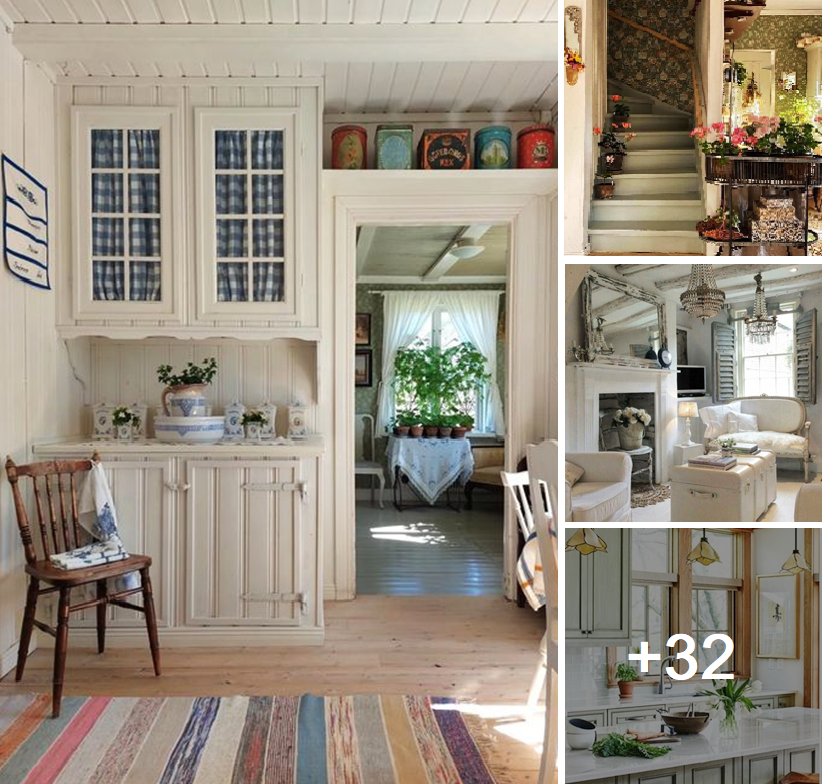
Since a historic kitchen as a whole is not an ideal model, designers and architects who want to create successful new old kitchens focus less on the whole and more on the parts. Historic appropriateness is communicated via a summary of thoughtful details spread across cabinetry designs, countertops, plumbing fixtures and more. And while modern appliances and storage solutions don’t always look ‘old’, they can be tempered or even obscured by more prominent traditional features.
Whether a kitchen is being renovated or remodeled, cabinets are its most dominant feature, and their style and layout are crucial considerations. Architects and kitchen designers often rely on experienced cabinetmakers to skillfully mix new and old in their designs. Custom cabinets can celebrate centuries of skilled woodworking techniques on the outside while showcasing the latest storage solutions inside.
Carpenters look to a home’s existing details for clues when guiding homeowners toward an appropriate door style. From Shaker simplicity to Victorian embellishment to the Arts and Crafts artist, each time period has distinct factory details that affect the cabinet’s appearance.
After style, paint colors are an important component of a traditional kitchen. In colonial America, milk paint was widely used on furniture and interior woodwork. A basic composition of milk, lime and earth pigments, it was easier to make than oil paint and is easily identified by its rich color and soft, velvety texture. Hand rubbing and other finishing processes such as light distressing allow cabinetmakers to mimic the patina of older cabinets. And for the finishing touch, hardware made from historically appropriate materials such as wrought iron or brass completes the new old effect.
Layout is another important factor that affects the historical tone. Often, designers try to avoid the dominance of upper cabinets, which can give a kitchen a distinctly modern look and also make it feel confined. Instead, open shelves, plate shelves or glass cabinets provide authenticity and create the feeling of an older space. If upper cabinets are required, designers recommend styling them to look more like furniture, with smaller openings, and also keeping them at a generous distance from window sills.
Historically, kitchens consisted of free-standing elements such as stoves, dry sinks, chests, cupboards, tables and chairs. To mimic the look of individual furniture and appliances, designers create “composite kitchens” by mixing cabinet designs and finishes. A kitchen island or pantry, for example, may have a different finish or even hardware than surrounding cabinets.
Worktops & sinks
Natural materials that would have been available to early Americans guide the choices for countertops and sinks. Countertops in historic homes were usually made of wood, slate, or soapstone—whatever was available and affordable in a particular geographic area. Marble was much more common in Europe, where it was quarried, but was occasionally found in more prosperous American households. Valued for providing a smooth, cool surface for making bread and pastries, marble can be reserved for a bakery preparation area in a large kitchen.
Because it was quarried in the United States, particularly Vermont and Virginia, and is easy to shape and cut, soapstone was widely used in the nineteenth century for countertops and sinks and is one of the most authentic choices for these features today. A form of talc, it is held together by impurities such as iron and magnesium, is softer than both granite and marble, and is valued for its ability to retain heat. The application of mineral oil helps the soapstone achieve its dark gray age patina.
Soapstone sinks in particular offer the best of both worlds. They are historic in appearance – shaped with the same tongue and groove used in the past – but can be ordered and tailored to any desired size and depth.

